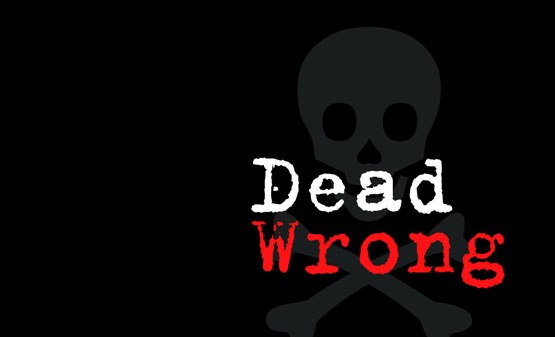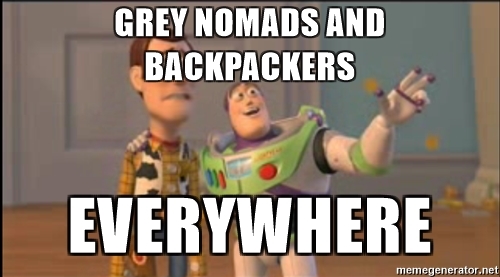I used to write about stuff like this more often when I first started my blog (1, 2, 3 ), but it seems like time to get back to basics. Here’s the story behind “private property:”

Here in Humboldt County, we take private property very seriously. We talk about “property rights” as though they were sacred principles, while we trample human and civil rights as if the Bill of Rights, and the UN Declaration of Human Rights, were just yesterday’s newspaper. One might be surprised by how wholeheartedly we embrace this idea of “private property,” when you consider just how recently the concept was imposed on this area.

300 years ago, there was no private property in Humboldt County. There were plenty of people here, but no title deeds, no “No Trespassing” signs, and no Sheriff’s deputies, courts or lawyers, and by all accounts, life was pretty good here, 300 years ago. The story of how private property came to Humboldt County is not a pretty one. It’s a story that most property owners around here would be ashamed to tell, and should be ashamed to tell, were they to tell it truthfully, which they don’t often do. It’s a shameful story because it involved so much heartless, vicious, violence and blood-lust, and because few of us want to admit that we could be related to, or even have financial dealings with, the monsters who carried out such atrocities.

The story of how “private property” came to Humboldt County is not unique. All around the world, where “private property” is honored, there is a legacy of brutal, monstrous violence upon which it was founded, and in which lies it’s only authority. Here in Humboldt County, only about one-quarter of the households residing in the county, can realistically afford private property on which to live. Three quarters of us are just shit-out-of-luck. This is also reflected globally. More than half the people in the whole world do not own private property, or “real” property if you prefer, and have no chance of ever doing so, while a tiny minority, like 1% of the worlds population, owns more than half of it. Every year, the percentage of private property in the hands of that tiny minority, increases, while the amount available to the rest of the planet’s growing population, decreases.

So, why do people continue to honor this system of private property, even though it works so poorly for the majority of us? There is only one answer to that question. Violence. All of those past monstrosities, must be backed up with day to day violence to maintain the system, and the threat of more violence to come, insures that people continue to honor this violently imposed system of private property. Armies, navies, armies of cops, prisons, courts, lawyers, and the whole modern arsenal of lethal weaponry all exist, primarily, to inspire and maintain respect for private property.

There is nothing moral or right about private property at all. People honor the system because they don’t want to get arrested and thrown in jail, or shot, and mothers teach their children to honor it, because they don’t want their kids to go to jail or get shot, or because, by luck of birth, the child is born into one of those privileged families, who own private property, and for whom the system of private property works very nicely, thank you very much. Either way, I don’t see how you could possibly make a moral case to defend it.

I know a lot of fundamentalist Christians who have done their best to do so, but in order to buy their baloney, you have to believe their fairy tales. You have to accept “God’s” word that he gave us “dominion” over the Earth, and you have to accept that “dominion” means “the right to rape, pillage and dissect.” I don’t buy it. If God had intended us to have private property, he would have given Moses a stack of title deeds instead of the 10 Commandments.

I reject their moral authority and discount their fairy tales, despite their popularity. In my eyes, private property is morally indefensible, as well it should be in yours too, but hey, let’s be scientific about it.

If Global Warming is an “Inconvenient Truth.” Private property is the convenient lie that made it possible and necessary. Private property turns the community of life into resources, and licenses their extraction and exploitation. Private property butchers integrated ecosystems slashing them with arbitrary property lines, which then become real fences and roads that divide and fragment habitat, and displace wild plants and animals.

People borrow money to purchase private property, and then extract and sell off the natural abundance of the land to pay the interest on the loan, so the owner is left with depleted land, and a title deed that declares that the Sheriff will defend his right to possess that depleted land, with violence, against all trespassers, provided the owner pays his taxes. Then the owner must find a way to produce something, on that land, that he can sell for enough money to pay whatever taxes the Sheriff demands, which then further depletes the land’s natural abundance, and drives displaced species who once thrived there, into extinction. In other words, when you look at it scientifically, you will discover that the concept and practice of private property is profoundly dysfunctional, from an ecological perspective.

I assume that none of this is new to you. You know the awful history of this place. You understand how private property works, and you have some awareness of the environmental crisis. By now you must see the moral bankruptcy, social injustice and ecological dysfunction of it. How can you say that any of it is right? You understand what’s legal within this system, but there’s nothing right about it. In fact, this system is killing us and destroying the planet because the system is wrong, dead wrong. It is very important that you understand that.

The same logic applies to intellectual property, in fact the concept of intellectual property was built on the morally bankrupt, socially unjust, and ecologically dysfunctional idea that everything on Earth, including our thoughts and ideas, can and should be commodified and sold to the highest bidder. Applying the violence of private property, to our ideas doesn’t make it a better idea. It is simply a method of enslaving our minds in the same way that it enslaves the world.

There has been a propaganda campaign to convince us that intellectual property rights protect struggling artists, but just the opposite is true. Most artists who make money from images you see on the internet, do not own those images. By the time you see them, those images have already been sold to corporations and business interests who dominate the media and use that system of private property to extract work from artists, before anyone has a chance to see it.
Artists, sell that work to those business interests because they need the money to pay their rent, and because the artist knows that no one but their immediate friends and family will ever see their work otherwise. Intellectual property rights were not designed to protect artists, or to prevent people from stealing artist’s work. Intellectual property rights were designed to prevent artists from selling their own work, again, to a different buyer. It was designed to allow capitalists to extract works of art from artists and exploit them for their own profit, without competition from the artists themselves.
This is why artists should be very careful not to assert their intellectual property rights on moral grounds. When an artist asserts his intellectual property rights on moral grounds, he also asserts the moral, just and sacred right of his landlord to hold the Earth beneath his feet, hostage, and to charge him for every footprint and shadow he casts upon it. I don’t know many artists who believe that. Hell, I don’t know many people who believe that, besides those who also own enough private real property to to feel invested in the whole rotten system, and choose to remain in denial about it.

I do not mean to say that artists should not exercise their intellectual property rights. Not at all. If you are an artists, and see some benefit to exercising your intellectual property rights as enumerated in the legal code, by all means do so, but do it for aesthetic reasons, political reasons, economic reasons or even petty personal reasons. Don’t do it on moral grounds or try to stand on principle about it, because the principle is wrong, dead wrong.

















































